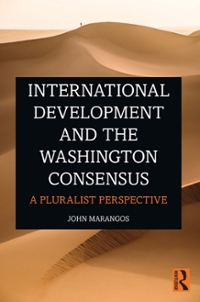Question
3) Monetary Policy Please refer to the article Fed Tightens Taps on Rates-Market Plumbing and answer the following questions. a. According to the article, what
3) Monetary Policy Please refer to the article "Fed Tightens Taps on Rates-Market Plumbing" and answer the following questions. a. According to the article, what was the "old way" of raising the target on the Fed Funds Rate? b. How does the "old way" of raising the Fed Funds rate work? (Please use graphs to support your answer). c. Why does the author contend that the "old way" of raising the Fed Funds rate would not work? What does he mention could serve as other ways that the Fed could impact rates?
Fed Tightens Taps on Rates-Market Plumbing Lahart, Justin. Wall Street Journal (Online) [New York, N.Y] 21 Sep 2014: n/a. Full Text The Federal Reserve probably won't raise short-term rates until sometime next year. But there may soon be a preview of how difficult managing the process will be. Due to the large bond purchases the Fed has made since the financial crisis, banks hold more than $2.5 trillion in reserves in excess of what is officially required. As a result, the Fed's old way of raising its target on the federal-funds rate--selling bonds through its open-market operations, withdrawing reserves from the banking system and thereby driving up demand for overnight borrowing--won't work. That is why after its meeting last week the Fed's rate-setting committee said it would use the interest the Fed pays on reserves that banks keep at the Fed, now set at 0.25%, as its main tool for raising rates. Another rate-setting tool it has been experimenting with as a way to put a floor under rates, a reverse-repurchase facility run out of the Federal Reserve Bank of New York, will be used "only to the extent necessary." The touchiness about the repo facility, through which the Fed lends bonds in exchange for cash, reflects concerns some Fed policy makers have over its use. The big worry is that market participants might turn to the facility too quickly during times of stress, and this could exacerbate flight-to-quality episodes. The reason: The facility offers a fixed rate (now set at 0.1%), so using it isn't particularly painful when things start looking dicey. That is in contrast to market-based instruments, which go up in price. One way to prevent that: Put a cap on the facility. The New York Fed did that last week, imposing a $300 billion daily limit. That is more than the facility typically sees, but below likely demand on Sept. 30, when money funds will be looking to place the cash flows they typically see at quarter end. That will probably set off a scramble by the funds for overnight assets that could send short-term rates negative, says RBC Capital Markets rate strategist Mike Cloherty. It could make for a teachable moment for the facility's critics at the Fed. They may not like it, but that doesn't mean they won't need it. Credit: By Justin Lahart (c) 2014 Dow Jones & Company, Inc. Reproduced with permission of copyright owner. Further reproduction or distribution is prohibited without permission.
Step by Step Solution
There are 3 Steps involved in it
Step: 1

Get Instant Access to Expert-Tailored Solutions
See step-by-step solutions with expert insights and AI powered tools for academic success
Step: 2

Step: 3

Ace Your Homework with AI
Get the answers you need in no time with our AI-driven, step-by-step assistance
Get Started


